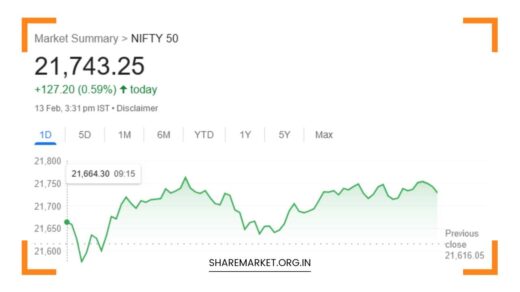Robust 15.73% Surge in Direct Tax Collection: ₹6.53 Lakh Crore in Govt. Treasury by August 10

Direct Tax Collection
Robust 15.73% Surge in Direct Tax Collection: ₹6.53 Lakh Crore in Govt. Treasury by August 10
In the midst of evolving economic landscapes and complex fiscal challenges, the Indian government’s financial performance for the current fiscal year has showcased a notable achievement. As of August 10, 2024, direct tax collections have surged to an impressive ₹6.53 lakh crore.
This marks a significant year-on-year increase of 15.73%, underlining a period of robust economic performance and effective tax administration.
This remarkable growth not only reflects the government’s ability to boost its revenue generation but also highlights its strategic advancements in financial management and taxpayer services.
This comprehensive analysis delves into the various facets of this tax collection surge, offering insights into its implications for the Indian economy, the efficiency of tax processing systems, and the broader fiscal environment.
A Detailed Examination of the Tax Collection Surge
The surge in direct tax collections to ₹6.53 lakh crore as of August 10 is a substantial indicator of the government’s enhanced revenue generation capabilities. This figure represents a notable 15.73% increase compared to the same period last year.
Such an impressive growth rate speaks volumes about the effectiveness of the government’s tax policies and economic strategies.
The Central Board of Direct Taxes (CBDT), the apex body responsible for overseeing direct tax collection in India, released this data through an official statement on August 11. The announcement highlighted the growth trajectory and underscored the government’s strong fiscal position.
This growth is not merely a reflection of increased economic activity but also points to the improved efficiency of tax administration mechanisms.
Net Direct Tax Collection and Refunds
According to the CBDT’s statement, the net direct tax collection, after accounting for refunds issued, stands at ₹5.84 lakh crore. This figure represents a striking 17.33% increase compared to the same period in the previous fiscal year.
The higher net collection underscores not only a rise in tax revenues but also an effective management of refund issuance.
Refunds are a critical component of tax administration as they reflect the government’s commitment to timely and efficient taxpayer service. For the current fiscal year, refunds amounting to ₹69,000 crore have been issued by August 10.
This represents a 3.73% increase from the corresponding period in the previous year. The rise in refunds is indicative of a more streamlined refund process and enhanced taxpayer satisfaction.
The Implications of the Surge
The 15.73% increase in direct tax collections has several significant implications for the Indian economy and fiscal management:
- Enhanced Fiscal Health: The surge in direct tax collections contributes to the overall fiscal health of the government. It provides a stronger financial foundation for implementing various developmental and welfare programs, thereby positively impacting economic growth and stability.
- Increased Revenue Potential: The higher tax collections signal increased revenue potential, which can be crucial for funding infrastructure projects, social welfare programs, and other government initiatives. This additional revenue allows the government to pursue ambitious economic and social goals without excessively relying on external borrowing.
- Positive Economic Indicators: The substantial increase in tax collections can be viewed as a positive economic indicator, reflecting improved business performance and higher taxpayer compliance. It suggests that businesses are thriving, and individuals are reporting higher incomes, which translates into increased tax revenues.
Progress Relative to Budget Estimates
The current performance in direct tax collections translates into 32.03% of the total direct tax budget estimate for the fiscal year 2024. This achievement is notable for several reasons:
- Early Achievement of Targets: Achieving 32.03% of the budget estimate within the first few months of the fiscal year highlights the government’s success in meeting its revenue targets early on. This early achievement allows for more flexibility in financial planning and allocation of resources.
- Effective Tax Administration: The ability to reach a significant portion of the budget estimate so early in the fiscal year reflects the effectiveness of the government’s tax administration strategies. It indicates efficient tax collection mechanisms and successful efforts to enhance taxpayer compliance.
- Strengthened Fiscal Position: The progress against budget estimates underscores a strengthened fiscal position, providing the government with a more robust financial base to address any unforeseen economic challenges and to implement its fiscal policies effectively.
Refunds and Efficient Tax Processing
The increase in refunds issued, amounting to ₹69,000 crore, demonstrates the government’s commitment to efficient and transparent tax administration.
Efficient refund processing is crucial for maintaining taxpayer trust and satisfaction. The rise in refunds by 3.73% indicates a smoother and more effective refund process, benefiting taxpayers and enhancing overall tax compliance.
Refunds play a critical role in the tax system, as they are a direct reflection of the government’s responsiveness to taxpayers’ claims.
The efficiency in handling refunds also suggests improvements in the backend processes of tax administration, contributing to a more streamlined and user-friendly tax system.
Modernization and Technological Advancements
The integration of modern technology into the tax administration process has been a key factor in the improved efficiency of income tax return (ITR) processing.
The Income Tax Department has been proactive in leveraging technology to enhance the taxpayer experience and streamline processes.
Streamlined ITR Processing: The department’s website reveals that 61% of ITRs have been processed as of the reporting date. This high processing rate reflects the department’s commitment to reducing delays and improving the efficiency of tax processing.
Reduction in Refund Processing Time: Traditionally, taxpayers would experience a waiting period of 20-45 days for their refunds after filing and verifying their ITRs. However, the current fiscal year has seen a significant reduction in this time frame.
Thanks to the integration of advanced technology and improved processing systems, the average time for receiving refunds has been reduced to just 16 days.
This improvement is a testament to the successful implementation of technological advancements in tax administration.
Benefits of Modernization for Taxpayers
The modernization of the tax processing system offers several benefits for taxpayers:
- Faster Refunds: The reduced processing time for refunds ensures that taxpayers receive their refunds more quickly, improving their overall experience with the tax system.
- Enhanced Transparency: Modern technology allows for greater transparency in the tax process, enabling taxpayers to track the status of their refunds and access information more easily.
- Simplified Processes: Technological advancements have simplified the process of filing and managing tax returns, reducing the administrative burden on taxpayers and making the system more user-friendly.
- Increased Accuracy: The use of technology enhances the accuracy of tax processing and reduces the likelihood of errors, benefiting both the government and taxpayers.
How to Check Your Refund Status
To help taxpayers stay informed about their refunds, the Income Tax Department has provided a user-friendly process for checking the status of tax refunds. Here’s a step-by-step guide to tracking your refund status:
- Visit the Official Income Tax India Website: Navigate to the official website of Income Tax India.
- Log In: Use your PAN number as your user ID, along with your password and the captcha code to log in to your account.
- Navigate to Return Form Section: Once logged in, go to the section dedicated to return forms.
- Select “Income Tax Return”: Choose “Income Tax Return” from the drop-down menu under the “Choose One” option.
- Enter Assessment Year: Input the relevant assessment year and submit the details.
- Track Refund Status: Click on the acknowledgment number of your ITR to view and track the status of your refund.
This straightforward process empowers taxpayers to manage and monitor their tax refunds efficiently, enhancing their overall experience with the tax system.
Final Remarks: A Promising Fiscal Trajectory
The significant 15.73% surge in direct tax collection, coupled with efficient processing of income tax returns and timely refund issuance, paints a promising picture of India’s fiscal health.
The government’s proactive measures and modernization efforts have led to a more streamlined and transparent tax administration system.
Robust Financial Performance: The current fiscal year’s achievements in direct tax collections reflect a robust and resilient economy.
The government’s effective revenue management strategies and successful implementation of technological advancements have contributed to a positive financial trajectory.
Continued Growth and Stability: As the fiscal year progresses, the continued positive trends in tax collections and refund processing suggest further growth and stability for the Indian economy.
The government’s commitment to fiscal prudence and effective revenue management is likely to reinforce the country’s financial stability and growth prospects.
Future Outlook: The promising fiscal performance observed so far is a strong indicator of the government’s ability to navigate economic challenges and achieve its financial goals.
The achievements in direct tax collections and refund processing bode well for the future, offering a solid foundation for sustained economic growth and development.
In summary, the substantial increase in direct tax collections, efficient refund processing, and advancements in tax administration reflect a period of significant progress for India’s financial landscape.
The government’s proactive approach and modernization efforts are set to drive further positive developments, ensuring a robust and resilient economy in the years to come.

















